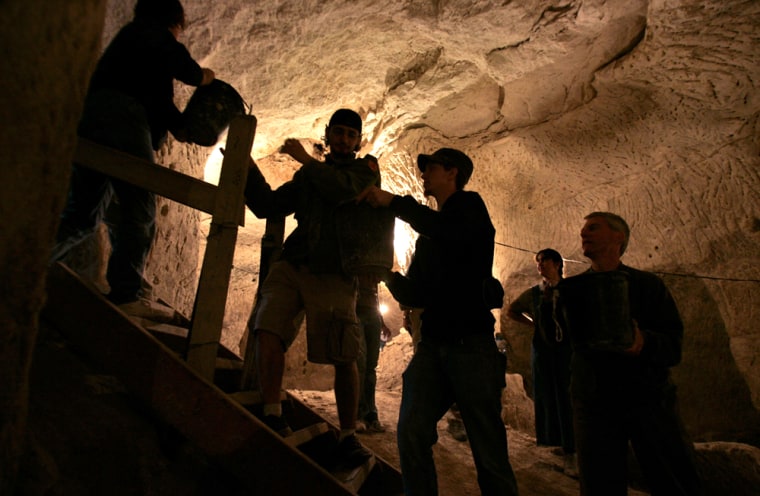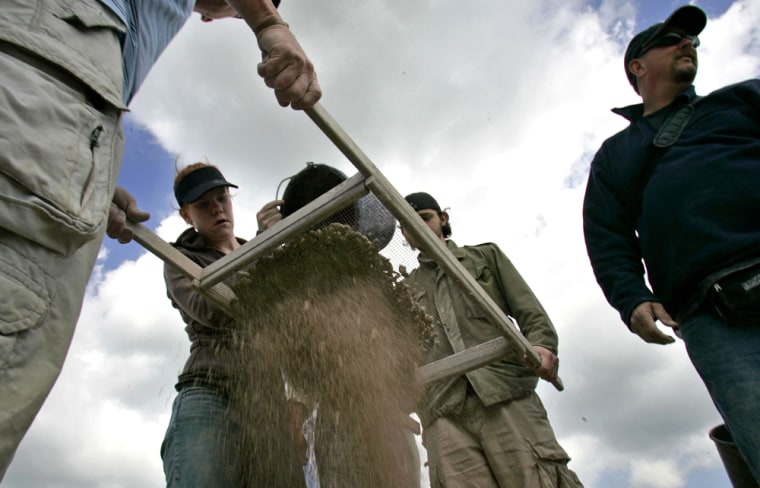Deep in a 2,000-year-old tunnel system outside Jerusalem, a young woman unearthed a rare oil lamp used in ancient rituals during an archaeological dig.
For Abby Krewson, the discovery is especially gratifying: Krewson is a 10th-grader from Philadelphia participating in a "dig for a day" archaeological experience with her family and a Bible college group.
"I didn't expect to find something like that, so it's very exciting," Krewson said.
Tourists like Krewson pay $25 to spend the day working in ancient tunnels in Israel's Bet Guvrin National Park, about 20 miles southwest of Jerusalem.

Participants do the dirty work, digging and sifting through the ruins, while their fees underwrite the more difficult parts of archaeological work: washing pottery shards, logging finds, and publishing papers in academic journals.
Ian Stern, director of Archaeological Seminars, which is licensed by the Israeli government to do the dig, said it's a "Tom Sawyer-ish, paint-the-fence-white kind of a situation."
About 30,000 to 50,000 people pay to do the dig each year, raising about $1 million, he said. He says hundreds of thousands of people have participated in the experience since the project started 25 years ago.
Different "excavation vacations" exist around the world, from a medieval graveyard in Poland to plantation ruins in the Caribbean. Stern says the Holy Land dig, drawing all kinds of tourists in Israel, has been especially popular with Christian tourists and Jewish youths visiting Israel for the first time on the "Birthright" program.
"We've provided more people with a personal contact with archaeology than anybody else in the world," Stern said. "It helps them connect to their roots."
For Reynaldo Villarreal, a Christian tourist from Texas, the connection had special meaning. He recently learned that his ancestors were Sephardic Jews who left Spain during the Inquisition for Mexico and then immigrated to the United States. One year ago, he said his 17-year-old son died in a drowning accident and he said this trip was to help him and his wife grieve.
In the cool subterranean caverns, Villarreal lost himself in the dig as he uncovered pottery shards and animal bones.
"It's exciting to help in the excavation of this cave and think of the people who lived in this place," he said. "Maybe what we find can be of some help."
The caves were made in the Hellenistic period, about 2,200 years ago, and are found near Maresha, the ancient capital of the biblical Edom and possible birthplace of King Herod the Great, Stern said. The dig is one of the richest in the world, Stern said.
"People find so much that they get skeptical and think that we planted some of it," he said. "But this isn't Disneyland, this is real."
Beverly Horne, a tourist with the Philadelphia Biblical University, said she was thrilled to see places she'd read about in the Bible and to handle artifacts from the ancient world.
"We're touching stuff that hasn't been touched for 2,000 years," Horne said. "It's exciting. I can't wait to tell my kids."
The group finished the day by crawling through an untouched cave where the dirt nearly reached the ceiling. Stern said it helps participants get a perspective of how much work has been done at the dig site, where vaulted ceilings rise up five to seven yards above the floor.
William Krewson, Abby's father and the director of the Bible college group, said that last year when he came to the dig, the dirt was about a yard higher. He said he keeps scheduling the excursion for his tours because "the students love it. It's fun, it's educational, and every once in a while, somebody finds something really significant."
